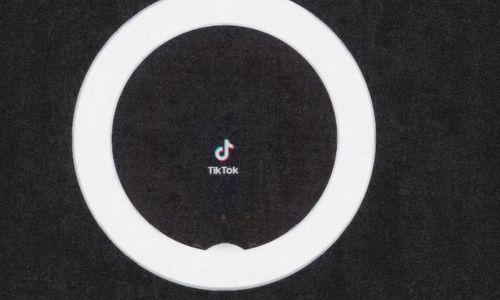In the past few years, social media websites have become essential to our everyday routine. They let us communicate with our loved ones, keep ourselves informed about current events, and express our opinions and life experiences with others. Due to the growing usage of voice activated technology, it’s not unexpected that social media platforms are now integrating this technology into their features.
People are increasingly interested in using their voice to interact with their electronic devices. This is evident from the growing number of people using voice assistants on their smartphones, smart speakers, and other devices. This trend is due to a desire for more natural and casual interactions with technology. The media and entertainment industry has recognized this trend and is accepting voice technology as a way to interact with consumers.
Voicebot.ai reported that more people used voice assistants on smartphones in 2020 compared to 2018, with an 11% increase in users and a 23% increase in daily active users. Moreover, in the United States, the number of smart speakers installed reached 90.7 million, which is approximately one-third of the total adult population. These facts demonstrate how quickly people are adopting voice technology.
Voice technology is becoming more popular than smartphone ownership, and it’s growing at a faster pace. It’s expected that by 2023, people will spend around $80 billion through voice commerce, as it becomes the favored way of consuming video content. This increase in popularity has resulted in companies creating new experiences that can be controlled by voice to help customers find and explore different programming options.
Integrating voice activated technology into social media platforms is the next logical step of this trend. This technology can change how we use social media, by making it more casual and customized. For instance, people can use voice commands to look through their social media feeds, create posts, and communicate with their followers. In this article, we will discuss some of the ways that social media platforms are utilizing voice-activated technology to improve how people use these platforms.

Facebook was among the first social media platforms to include voice activated technology. In 2018, they introduced a new feature called “Facebook Portal”. It’s a smart speaker device that lets people make video calls using voice commands. This gadget is designed mainly for video calls, and it can connect with other Facebook Portal devices or through Messenger.
Facebook Portal enables people to make calls, listen to music, and manage their smart home devices using only their voice. People can also use this device to watch shows and movies through Facebook Watch, which is a streaming service. Even though Facebook Portal is not a typical social media platform, it still enables people to interact with their Facebook friends and family by making video calls. Hence, it’s a significant contribution to the social media scene.
Twitter is also testing voice-activated technology. In 2020, they launched a new feature named “Audio Tweets”. It permits users to make and share small audio clips with their followers. Initially, it was available only for some users, but it is now accessible to all iOS users.
Audio Tweets are a novel approach for people to express their opinions and viewpoints on Twitter. They can capture a maximum of 140 seconds of audio and attach it to a tweet, which allows their followers to hear their message instead of reading it. People have positively welcomed this feature, and it’s clear to understand why. It provides a more intimate and unique way to communicate than text-based tweets, allowing people to convey their thoughts in a new style.
LinkedIn, the networking platform for professionals, has also begun to integrate voice-activated technology into its services. In 2020, they released a new feature called “LinkedIn Stories.” It enables people to share brief videos or photos that vanish after 24 hours.
Although LinkedIn Stories is not solely activated by voice, it allows users to include a voiceover in their videos. This implies that people can record a short message and append it to their story. As a result, their followers can hear their message instead of having to read it. This feature is particularly handy for individuals and businesses who want to share rapid updates or thoughts with their network.
Instagram, a popular platform for sharing photos and videos, has adopted voice-activated technology. In 2020, the platform introduced a feature called “Instagram Reels,” which enables users to create brief 15-second videos with music and unique effects. Since then, Reels has become a well-liked aspect of the platform, with users generating entertaining and imaginative content.
Instagram Reels is a popular feature that allows users to create short 15-second videos with music and special effects. A useful feature of Reels is the ability to add voiceover to the videos. Users can record their voices and add them to their Reel, providing context or narration for their content. This feature has enabled users to share more engaging and dynamic content on the platform.
TikTok is an app where users can make short videos that are 15 seconds long, and they can edit them with music, filters, and special effects. One of the cool things about TikTok is that users can add their voices to the videos, allowing them to talk about what’s happening or share their thoughts on their content.
TikTok has a new feature called “text-to-speech” that lets users change their text into audio. It’s helpful for people who want to make videos with narration but don’t want to record their voices. It’s also useful for people who may find it hard to record their voice.
Challenges And Concerns
Using voice-activated technology in social media platforms has advantages, but it also raises concerns that need to be addressed. One of the main concerns is privacy. Devices and services that use voice-activated technology gather audio data, which can be sensitive and personal. Social media platforms need to be transparent about their data collection practices and give users control over their data.
Another worry is the possibility of misuse. Voice-activated technology can generate fake audio recordings, known as “deepfakes.” These deepfakes can be used to disseminate false information and propaganda, which can lead to significant repercussions. Social media platforms will need to come up with methods to identify and delete deepfakes from their platforms.








